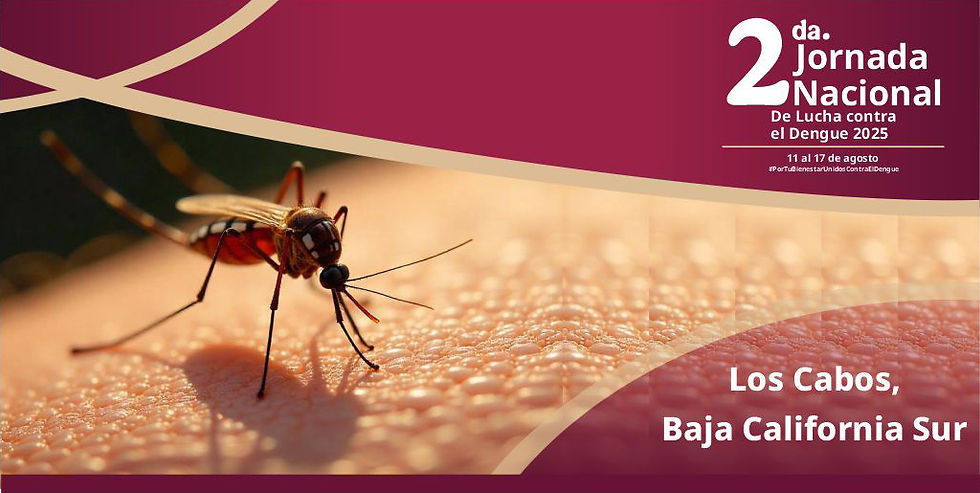BCS Leads in Dengue Fight: Wolbachia Mosquito Release Begins in Second National Campaign
- Redacción
- Aug 12
- 2 min read
Following the awareness phase, controlled and sustained releases will begin.

Baja California Sur – Tuesday, August 12, 2025. On Monday, August 11, Cabo San Lucas witnessed a landmark event for public health: the launch of Mexico's Second National Dengue Action Week 2025, featuring the implementation of the Wolbachia method, an innovative biological strategy aimed at reducing transmission of dengue, Zika, and chikungunya.
Backed by science and technology, the federal government, via CENAPRECE, together with the state government, released mosquitoes carrying Wolbachia bacteria. This harmless bacterium prevents the Aedes aegypti mosquito from transmitting viruses to humans. Having proved successful in La Paz since 2018, the program is expected to reduce dengue cases by at least 60% in areas like Los Cabos over the next two years.
Why This Matters for BCS Residents
Effective and sustainable prevention: The Wolbachia method offers a long-term solution that poses no risk to humans and disrupts virus transmission biomedically.
Proven success locally: In La Paz, this approach reduced dengue cases by up to 50% in 2024. Los Cabos, with over 2,000 cases last year, stands to benefit significantly.
Major public health impact: Lower disease rates mean fewer hospitalizations and better quality of life, especially in areas with limited healthcare access.
Community involvement and trust: Before mosquito releases, a public awareness campaign is underway to explain the method’s benefits and build acceptance.
Regional leadership: BCS and Yucatán are the only Mexican states currently using this tech, potentially setting a model for others.
What Comes Next?
Following the awareness phase, controlled and sustained releases will begin. Authorities anticipate measurable results within two years, significantly reducing transmission of dengue, Zika, and chikungunya. This effort complements other measures like larvicide programs, epidemiologic monitoring, and enhanced clinical care.
From BajaSur360, we highlight that this initiative shows a strong scientific and community commitment. If it succeeds as it did in La Paz, it could transform vector control in the region and offer a sustainable model for all of Mexico.





Comments